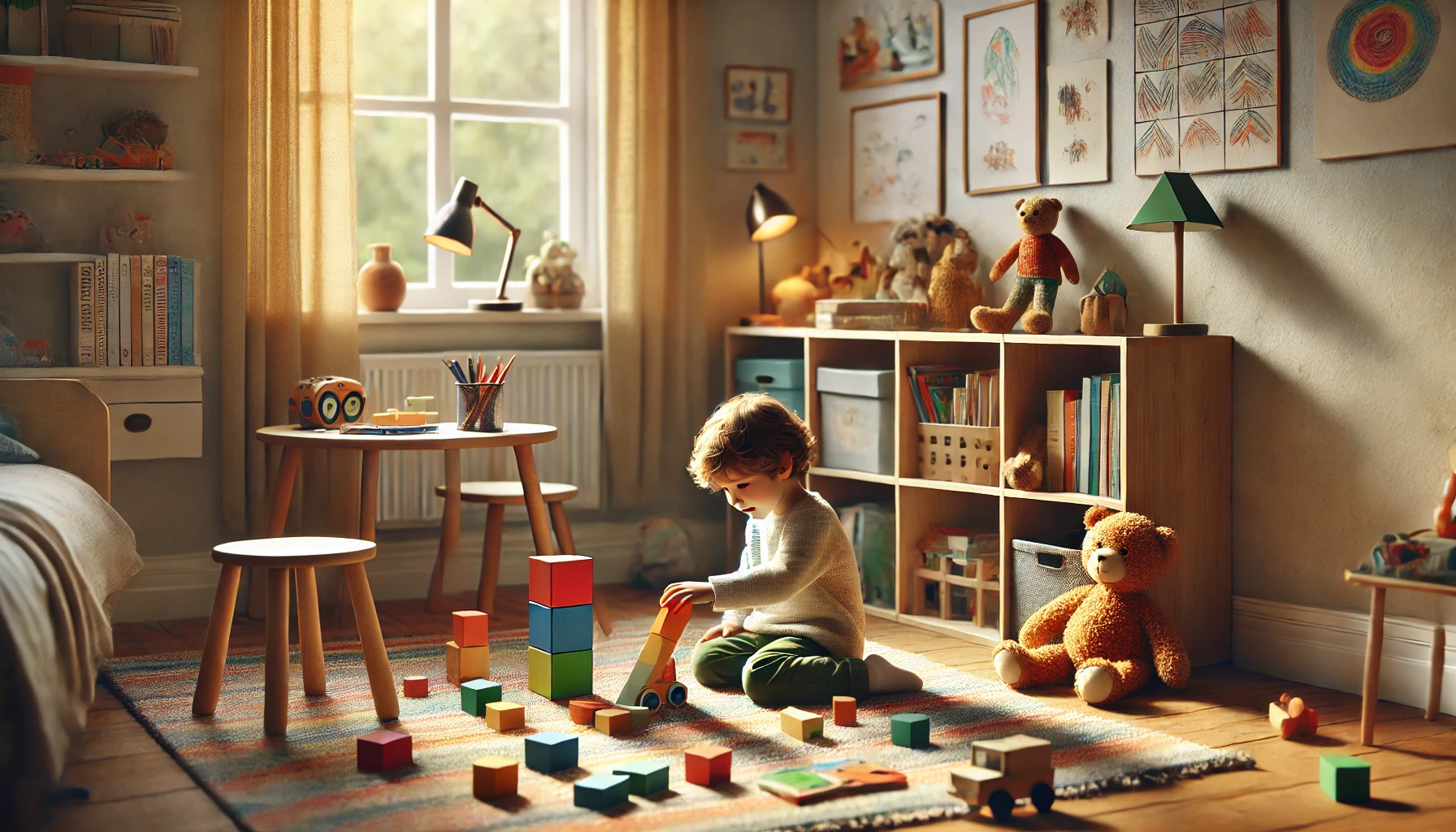Independent play is more than just a way to keep children busy — it’s a vital part of their development. When children learn to play on their own, they build creativity, confidence, problem-solving skills, and the ability to focus. It also gives parents moments to recharge or handle daily tasks while knowing their child is engaged in healthy, purposeful activity.
In this article, you’ll discover how to foster independent play at home in a natural, effective way.
Why Independent Play Matters
- Boosts imagination: Without constant guidance, kids invent their own stories and rules
- Develops concentration: Self-directed play increases attention span over time
- Fosters decision-making: Children choose how, what, and when to play
- Builds self-confidence: Kids feel capable when they solve problems or play independently
- Reduces dependency: Encourages self-entertainment rather than constant adult stimulation
Even just 10–15 minutes of solo play is a great start!
When Can Children Start Playing Independently?
Children as young as 12 to 18 months can begin short sessions of solo play. As they grow, the time can be gradually increased.
General Time Guidelines:
- Toddlers (1–2 years): 5 to 10 minutes
- Preschoolers (3–5 years): 15 to 30 minutes
- Kindergarten age (5–6 years): 30+ minutes
The key is consistency, patience, and making the play space inviting.
How to Set Up a Space That Encourages Solo Play
1. Safe and Accessible Environment
Make sure the area is child-proofed, cozy, and filled with age-appropriate toys. Avoid clutter — too many options can be overwhelming.
2. Use Open-Ended Toys
Toys that can be used in multiple ways are perfect for independent play:
- Blocks
- Dolls and figures
- Pretend play sets (kitchen, doctor kit)
- Art supplies
- Cars, trains, and tracks
Avoid toys that rely too heavily on buttons, lights, or adult input.
3. Create “Invitations to Play”
Set up little scenes or play prompts:
- A basket of animal figures and a play mat
- A few books with a stuffed animal to “read to”
- A tray with colorful pom-poms and tongs for sorting
These spark curiosity and draw children in naturally.
Strategies to Support Independent Play
1. Start Small and Be Present
Begin by staying nearby, even in the same room. This gives your child a sense of security.
2. Avoid Interrupting
Resist the urge to jump in and “help” unless asked. Let your child explore, even if the play isn’t perfect.
3. Use a Timer or Music Cue
Set a gentle timer (e.g., 10 minutes) and say: “When the music stops, we can play together again.” This gives children a clear boundary.
4. Celebrate Their Play
Afterward, ask about what they did:
- “What did you build?”
- “Who was the story about?”
This reinforces that solo play is valuable and interesting.
5. Model It
Let your child see you doing something independently too — reading a book, writing, or tidying up. Children often mimic adult behavior.
Ideal Times for Independent Play
- After snack time: Energy boost makes it a great window
- Before nap or quiet time: Helps with winding down
- While you’re prepping meals: Keeps them safely engaged nearby
Challenges Parents May Face
“My child won’t play alone.”
That’s okay — it takes practice. Start small and build trust in the routine.
“They keep asking me to play with them.”
Validate their request, but gently redirect:
“I’ll play with you in a few minutes — now is your special playtime.”
“They get bored quickly.”
Rotate toys weekly and create new “invitations to play” to keep things fresh.
Sample Independent Play Activities
- Building with blocks or magnetic tiles
- Coloring or sticker books
- Pretend cooking with toy food
- Lining up cars or sorting animals by size
- Quiet sensory bins (rice, sand, beans with scoops)
- Simple puzzles or matching games
Encouraging Confidence Through Solitary Play
Independent play teaches children that they are capable, imaginative, and resourceful — all while you get a moment to breathe. By setting up the environment, offering the right toys, and slowly building the habit, you’re giving your child an incredible gift: the ability to enjoy their own company and learn through it.
